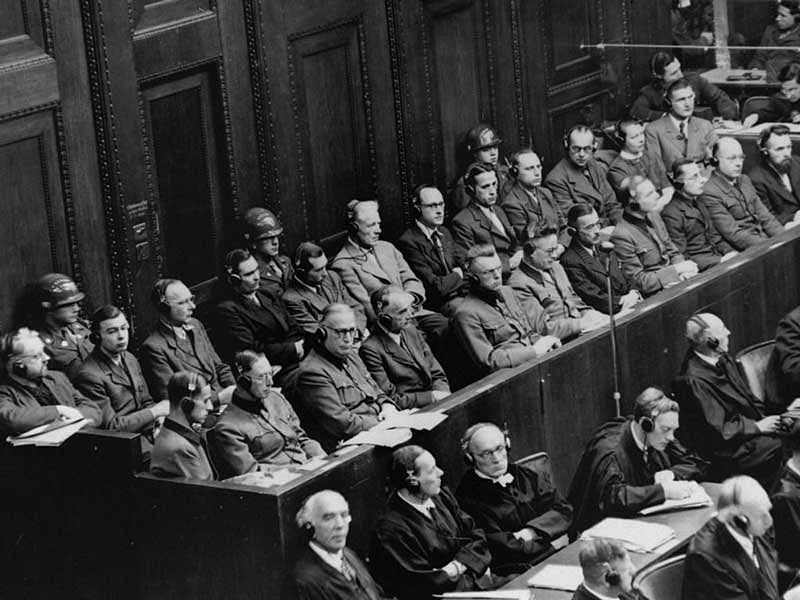
The year 2018 marks the 70th anniversary of the culmination of the Nuremberg trials in post-World War II Germany. The defendants, who were sentenced to be hanged, were finally executed in 1948.
For the uninitiated, the Nuremberg trials tried several Nazis for crimes against humanity and most of the trials were concerned with the Nazi policy of ‘Endlösung’ or the Final Solution — the extermination of all Jews in the world.
Of all the trials, perhaps the most infamous one was the ‘Doctors’ Trial’. There were 23 defendants in the dock at Nuremberg, 20 of them physicians. Most of them were involved in the pseudo medical experiments that were conducted on hapless inmates at the concentration camps. It is difficult to understand what these doctors wanted to achieve. Most of their so-called experiments, in the absence of any scientific basis, appear to be sadism at work.
Kenneth Mellanby reported that “the inmates [of concentration camps] were subjected to cruel experiments; victims were immersed in cold water until their body temperature was reduced to 28˚C, when they died immediately. Other experiments included high-altitude experiments in pressure chambers, experiments to determine how long human beings could survive in freezing water, experiments with poisoned bullets, experiments with contagious diseases, and experiments dealing with sterilisation of men and women by X-rays and other methods”.
Dr Josef Mengele, the ‘Angel of Death’ at Auschwitz, specialised in experiments on twins. His studies included castration, injection of phenol into the heart to induce a painful death and performing surgeries on children without anaesthesia. Dr Klaus Karl Schilling injected 1,200 people with the malarial parasite at the Dachau concentration camp. About 400 of his ‘patients’ died.
Many of these doctors were well educated. Dr Schilling was a well-known authority on malaria. He had been a member of the League of Nations Malaria Commission. Mengele was a PhD in anthropology from the University of Munich and he earned a doctorate in medicine from the University of Frankfurt in 1938. Others were equally well qualified. It was not a lack of education that prompted them to perform their experiments.
During the trial, the argument put forward was that the doctors were forced to perform these experiments. They placed the blame entirely on Reichsführer Henrich Himmler, the second most powerful man in the Reich after Hitler. Himmler strongly subscribed to the Nazi theories on race and superiority. He was responsible for setting up the extermination camps, and performing the ‘medical experiments’ on the inmates was a fallout of this.
The Nazis used the phrase ‘Befehl ist Befehl’ extensively during the trial. This translates loosely as ‘Orders are Orders’, and the contention of the defendants was that they had no choice but to follow the orders of
the Reichsführer. This did not absolve the doctors from the responsibility of what they did to the hapless inmates of the concentration camps. Of the 20 doctors who were put on trial, four were awarded death sentence, six were acquitted and the rest were jailed for varying periods.
The Nazi experiments gave a completely new meaning to the word ‘Thantology’. Thantology is the scientific study of death and the practices associated with it. The Nazis killed millions of people using scientific (or pseudoscientific) methods. Perhaps performing these experiments was a justification of this extensive homicide.
Was the data obtained from these experiments useful? Firstly, it is unethical to use the data from these experiments. But there have been at least 45 papers published after the war that have cited the Dachau hypothermia experiments. A dispassionate analysis, even ignoring the ethical aspects, shows the experiments were poorly designed and the data cannot be used to benefit humanity.
A fallout of the trial was the promulgation of the Nuremberg Code of Ethics for medical research. Doctors were required to take the consent of a patient before experimenting on him. Researchers were to ensure that any form of experimentation would avoid unnecessary physical and mental suffering and the experiment would be in no way put the subject at risk.
Have the Nuremberg guidelines prevented unethical experimentation after WWII? To a large extent, yes. However, isolated examples do occur. Beecher had described about 50 studies in the US where ethics were completely ignored. His paper was pruned and finally published in the New England Journal of Medicine in 1966.
One example of an unethical experiment was the Willowbrook Hepatitis Study, in which mentally retarded children were deliberately injected with the hepatitis virus with parental consent. Unethical experimentation has been performed after WWII, but only a few of these studies have been published.
There have always been periods when humanity has shown utter disregard for human life. It is unlikely that the Nuremberg code will rein in the beast in humans. We can only hope that the events that occurred more than 70 years ago are not repeated.
(The writer is Senior Consultant, Surgical Pathology and Molecular Diagnostics, Bengaluru)